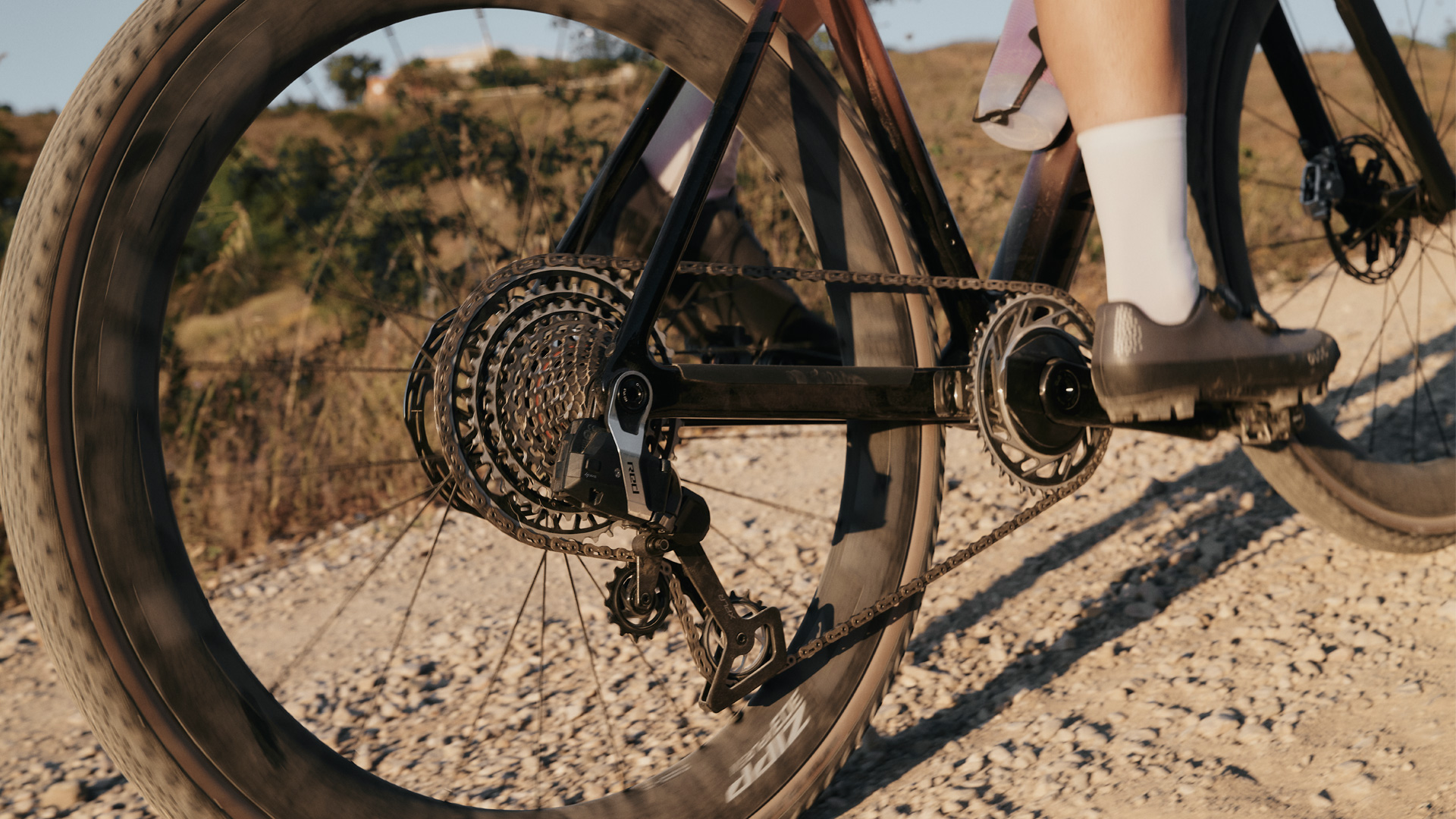
SRAM has refreshed its top-tier gravel components, with an update of the electronic Red XPLR AXS groupset, incorporating new technologies and going 13-speed. Also launched are Zipp 303 XPLR SW & S wheelsets with extra wide, deep rims, and Zipp SL 70 XPLR carbon handlebars.
But why now? There’s no question, gravel riding has exploded in the last few years and continues to gain momentum. Gravel events and races are popping up everywhere (think The Gralloch, Dirty Reiver, Unbound Gravel and the Migration Gravel Race) and, as a result, the fields are getting hugely competitive. All the leading brands are releasing gravel-specific components, with Shimano GRX, SRAM XPLR and Campagnolo Ekar in their ranges.
Aerodynamics has been a priority in performance road cycling for years, but watt-saving, drag-reducing equipment is now making its way into gravel. Gravel framesets are becoming more aero, so alongside the typical wide tyre clearances and numerous mounting points, we’re seeing more aggressive geometries and aerodynamic tubing, such as in the BMC Kaius. On the wheel side of things, Parcours has released their FKTs with a deeper rim that’s optimised around a specific tyre — all in the name of speed. But when you get more aero there’s usually a weight penalty. Is the penalty worth it for some aero gains? That probably depends on the rider and the race.
We've had the chance to get hands on with the new groupset, you can read North American editor Anne-Marije Rook's first impressions of SRAM's 13-speed Red XPLR AXS groupset here.
13-speed SRAM Red XPLR AXS
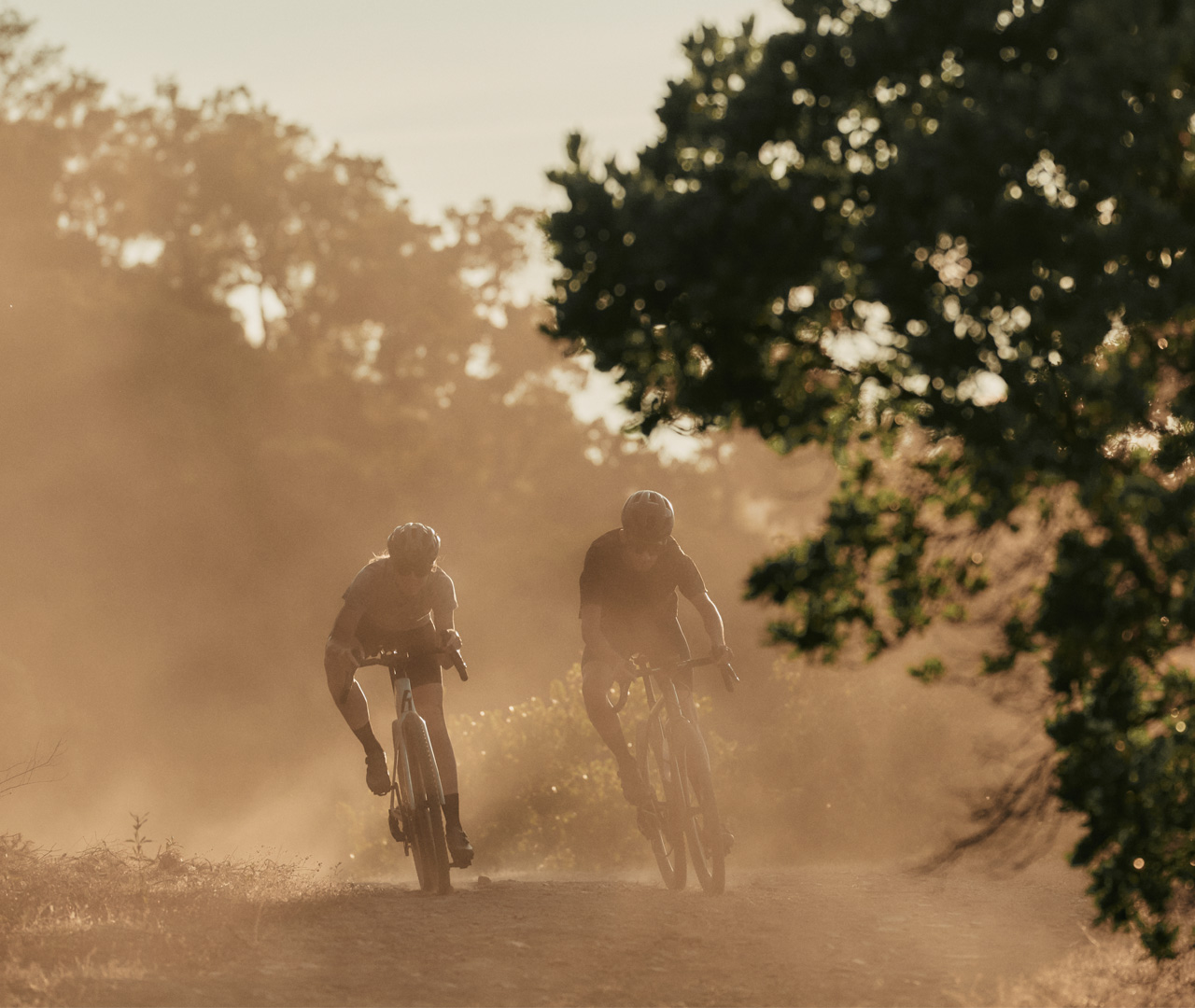
Spotted at Unbound Gravel in Kansas earlier in the year, SRAM has now released its updated SRAM Red XPLR AXS groupset. It’s part of the triplet of flagship performance models, the others being SRAM Red AXS (road) and SRAM XX1 Eagle AXS (mountain bike).
The SRAM XPLR range was designed specifically for gravel riding, that is, to hit the gearing sweet spot and to deliver effortless shifting. These Red XPLR components have a lot in common with the Eagle Transmission MTB series: Full Mount, flattop chain, X-SYNC rings, but also borrow from the latest SRAM Red AXS groupset. They are aimed at riders who want to go fast on mixed terrain. SRAM Red XPLR AXS brings together the resilience of the Eagle Transmission with the lower weight, and the bigger, but tighter gear range required for ripping it up on gravel tracks.
Several of the individual components are shared with those in the SRAM Red AXS road groupset, which had an overhaul earlier this year, but others have been updated specifically for the XPLR range, and the full groupset is 218 grams lighter than its predecessor, at 2,488 grams.
There are a few compatibility considerations with the new drivetrain: a minimum chainstay length of 415mm, a UDH dropout and a wide crank spindle with 47.5mm chainline.
13-speed cassette for more range and tighter ratios
Gravel racing can be relentless, and a 13-speed, 10-46T cassette provides a bigger range of gears with smaller gaps — you’ll be ready for both the big climbs and punchy sprints — and it weighs just 288 grams. The only real drawback, which may put off some, is that this is the only cassette size available or compatible with the rear derailleur.
UDH Full Mount technology
SRAM’s Universal Derailleur Hanger (UDH) technology — first released by SRAM in 2019 and fast adopted by mountain bike brands — aims to ease the stress of hunting for a replacement mech hanger by creating something universal that bike manufacturers can incorporate into their frame design.
There is a potential negative. UDH does require a bike frame with a UDH interface, so if your bike is not compatible you’ll have to rethink. Although SRAM states that most of the main gravel bike manufacturers offer UDH, it’s definitely a limiting factor.
Setup of the rear mech is simple: there’s no longer a need for adjustment screws and the alignment should be perfect with any drivetrain.
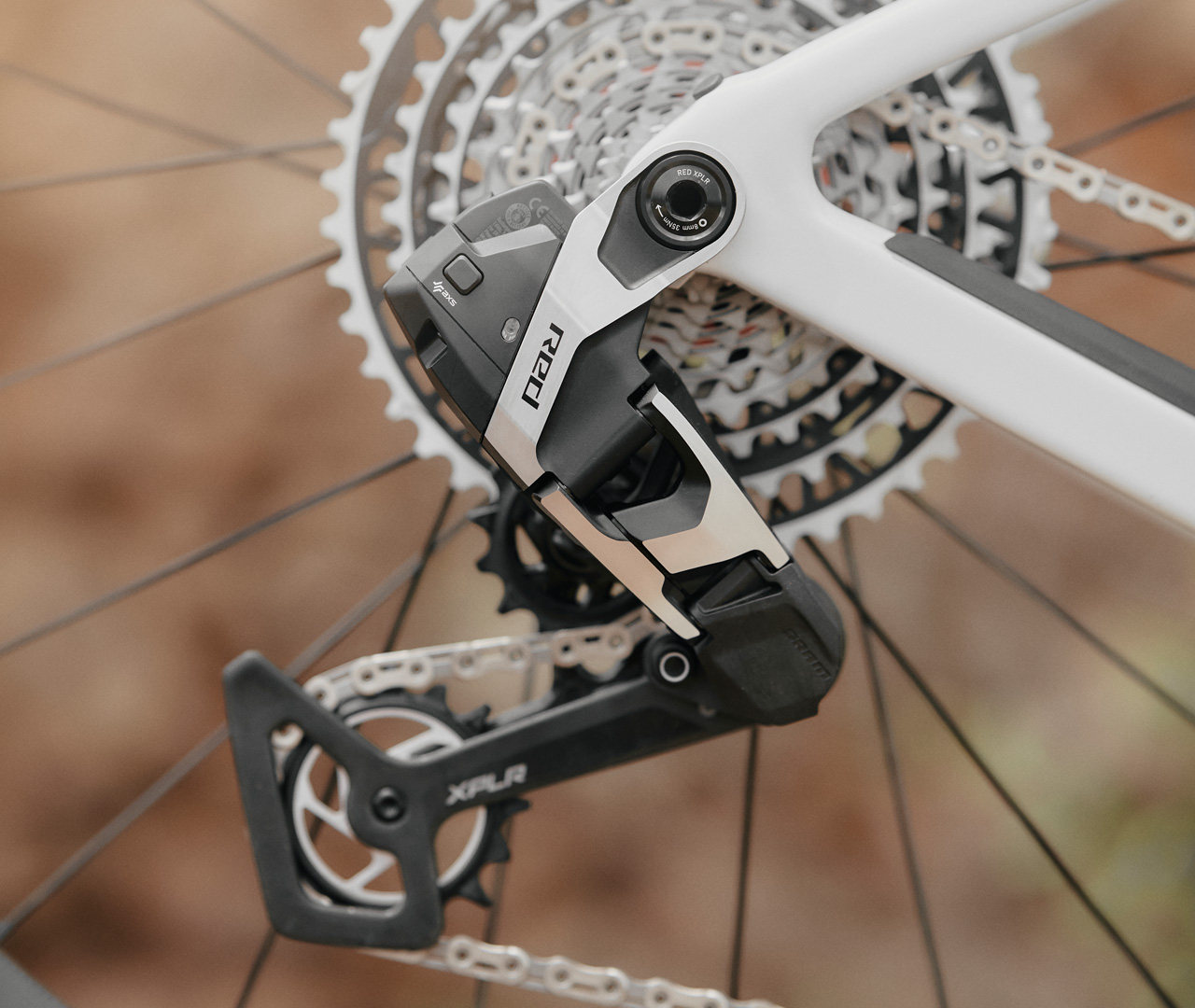
Compatibility aside, the system is extremely robust. Shifting is precise, the clutch light and efficient, and a Magic Wheel keeps the chain moving even if debris enters the lower pulley. Crash protection is built in, and the Full Mount hanger rotates back on frontal impact, moving it out of harm’s way.
It’s worth noting, SRAM wasn’t just thinking about potentially muddy or debris-covered trails when creating Full Mount, but also about travelling with your bike, the idea being that it'll survive knocks and bumps in transit unscathed — though we've yet to test this.
Light, stiff cranks and Thread Mount chainrings
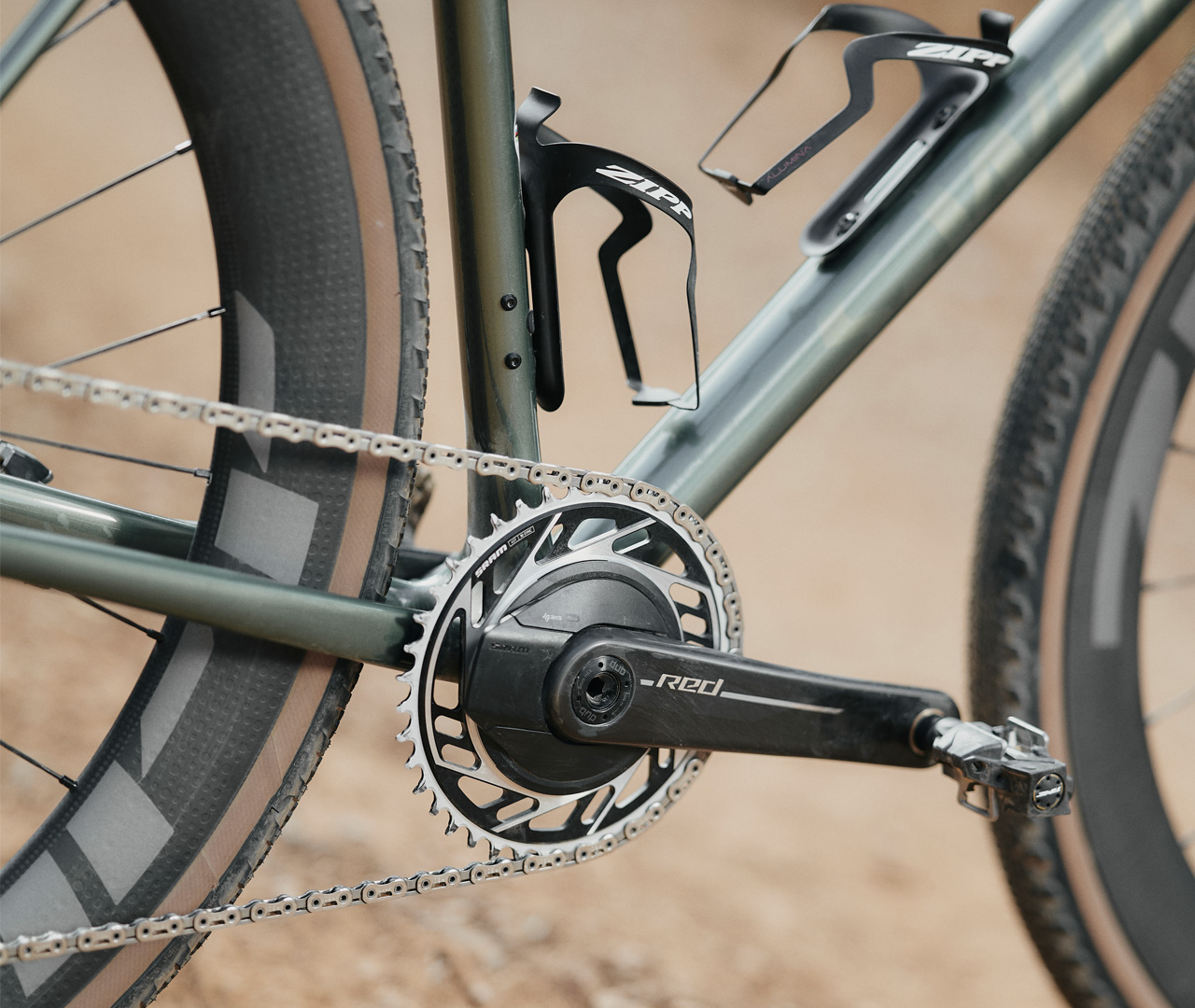
Those fitting out top-end gravel bikes are seeking speed and performance, with the vast majority opting for a 1x system to drop the weight and simplify shifting.
The Red XPLR crankset uses hollow carbon arms and is available in a range of lengths, from 160mm to 175mm, meaning riders with shorter legs (or those seeking improved aerodynamics) are well served.
Thread Mount chainrings reduce weight and maximise stiffness, while still allowing the rings to be swapped out with ease. X-SYNC technology, found on all SRAM 1x systems, helps clear mud and maximises chain retention.
Track your watts
Not just for the roadies, power meters are now popular in other disciplines too. The SRAM Red XPLR AXS spider-based power meter provides dual-sided power measurement and promises accuracy to within +/-1.5%.
Shift-brake levers, flattop chain and calipers are shared with SRAM Red AXS
The brake levers carry over from the recently released Red AXS road groupset, and these have been a hit at Cycling Weekly.
SRAM says that it's optimised the lever and hood shape for easier braking, something that will be well received by riders with smaller hands, who should be more able to wrap their fingers around more of the lever even when on the hoods.
SRAM states there’s now an 80% lighter brake feel than SRAM Red eTAP AXS, which should make for dramatically more comfortable braking on long, fast or loose descents. Both reach and contact points are adjustable, and a textured finish is designed to aid grip and control.
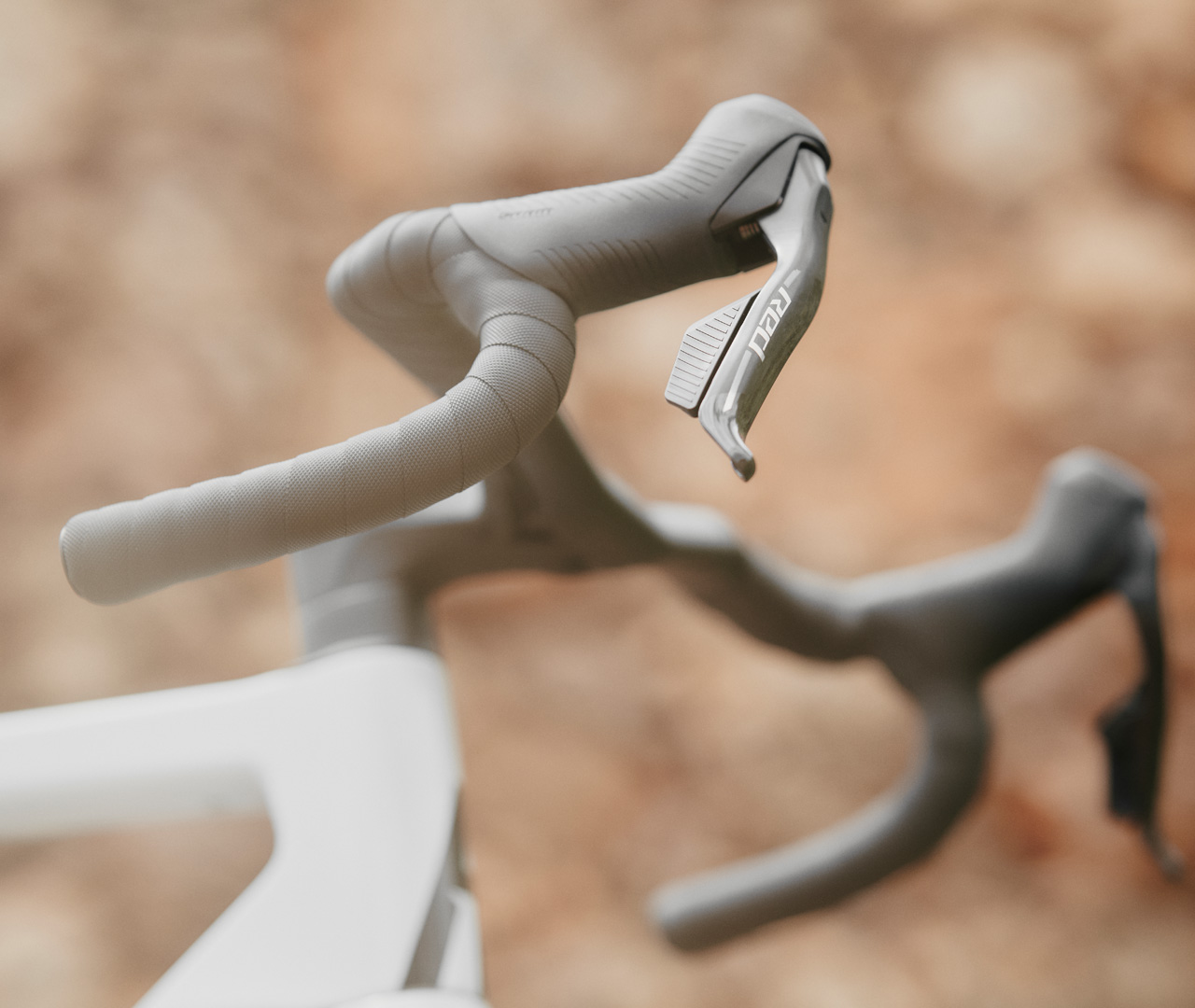
Something that’s only found on RED groupsets, a Bonus Button on each of the hoods allows you to shift up or down from just a light touch of the very accessible button. Using the AXS app, this feature is customisable, and can even seamlessly communicate with a head unit so you can flick through screens or pause the unit.
The flattop chain is SRAM’s most advanced, with the brand stating that cutouts in the outer plates shave 13 grams over its predecessor. The brake calipers are now lighter and stiffer, and there’s more pad clearance to reduce any performance-limiting rubbing.
Zipp 303 XPLR SW & S wheelsets
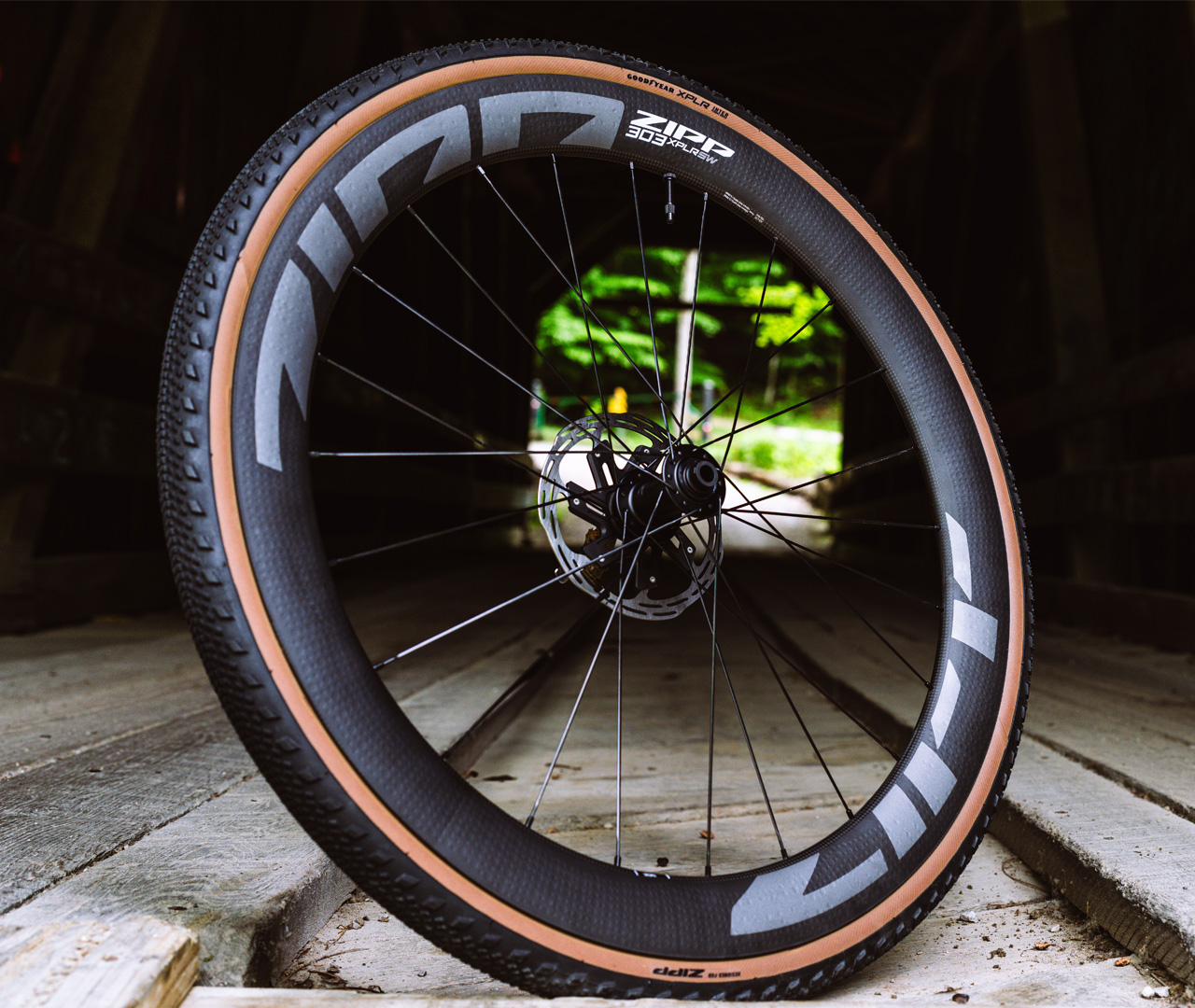
Extra wide Zipp 303 XPLR SW wheelset
Zipp has gone extra wide with its latest gravel wheels, and they’re all about speed.
Total System Efficiency (TSE™) is the brand’s design philosophy, the goal being to consider the system as a whole. Using this concept, Zipp found what it considered the perfect gravel tyre, and then built this wheel around it. The theory is that current gravel wheels with external rim widths of around 28–30mm, paired with wide (38–50mm) tyres, do not optimise aerodynamics. Instead, the wheel and tyre combo creates a ballooning effect and, although running low tyre pressures is key to speed, the rim does not provide enough support for lateral cornering loads at these pressures, causing the tyre to collapse and therefore negating the advantage.
The Zipp 303 XPLR SW wheel is primed to change all this with a huge carbon 32mm internal width. This increases tyre stance and prevents ‘squirm’ and reduces the potential risk of you washing out on a corner. The rim edge has also been increased for maximum protection from pinch flats.
Additionally, these new wheels have a rim depth of 54mm, which is pretty deep for a gravel tyre and more in line with a set of fast road racing wheels. Zipp says that its aerodynamic testing showed that this depth was ideal run with a 40mm tyre.
They’re hookless and tubeless, and are best used with tyre pressures below 30psi (2.1 bars).
What does all this really mean though? Are the average speeds you need to gain a big aerodynamic benefit really reached by the average gravel rider or racer? And is aerodynamics really even a thing in gravel racing? There will be plenty of opinions out there, but gravel racing is definitely getting faster, with average speeds of over 35kph often reached by the top riders. So for the serious racer looking for every possible advantage, these wheels are worth a look, but for us mere mortals, is it really worth it? These are questions we'll consider when we come to a longer term review.
Zipp 303 XPLR S — a more affordable wheel
Zipp’s 303 XPLR S wheels are definitely more wallet friendly, and you can save £500 over the SW wheels. They still have a carbon 54mm deep rim that’s 32mm wide, and thicker to prevent pinch flats, but there’s a 146 grams weight penalty and instead of the Zipp ZR1 hubs, you get the 76/176 hubs, with a simpler but dependable design.
If your interest in either of these wheels is piqued, keep in mind the European Tire and Rim Technical Organization standards for internal rim widths, and matching standards between a tyre and rim. These wheels do fall outside of the standards, and it’ll also be important to match the wheels with a recommended tyre (more information below).
Goodyear tyres optimised for the Zipp 303 XPLR SW & S
The tyres of choice are Goodyear XPLR Slick and Goodyear XPLR Inter, which have been specifically designed and optimised for this wheelset. If you’re going to invest in the wheels, then you’ll need to buy-in to the whole system. The XPLR Slicks are the fastest of the two, and best for the driest days and smoother surfaces. Light and supple, the ride quality is excellent and M:Wall reinforcement means you can get the pressures as low as possible, and reduce puncture risk.
The XPLR Inters are designed for dry and mixed conditions, with side blocks for grip and confident cornering. They have the same M:Wall reinforcement as the Slick model and a lightweight, supple casing. They’re ideal if racing conditions may be more unpredictable so you're therefore looking for a more versatile tyre for the 303 XPLR SW or S wheels, and don’t mind a little extra weight (525 grams, 70 grams more than the Slick). Remember that only approved tyres can be used with the XPLR wheels.
Complete your setup with the Zipp SL 70 XPLR carbon handlebar
This is a premium handlebar, constructed from carbon, with a goal of optimising a set up for ergonomics and comfort. The design includes a brake hose cover on the hood, which consequently creates a 'shelf', and support for your hands when on the hoods. There are big demands placed on the body during mixed terrain rides and races, and this shallow, wide bar aids speed through increased comfort and control. There are even defined locations on the drops and bar top to easily add SRAM Wireless Blips.







